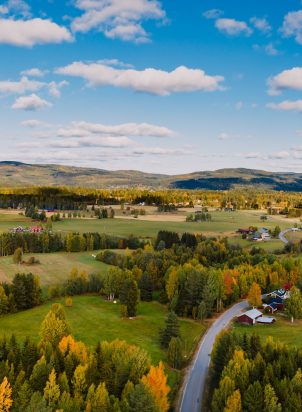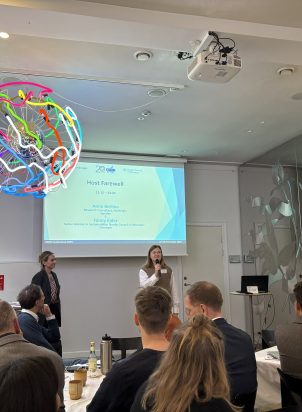Insights on Covid-19 impacts from the perspectives of cross-border communities
During Covid-19, free movement of people and services, and trade across borders has been drastically disrupted. Despite existing co-operation agreements, the Nordic countries took uncoordinated actions to protect themselves. Border closures have heavily affected lives in border communities. How could Nordic co-operation recover after the pandemic by integrating the resilience approach and focusing on cross-border communities?
Nordregio – Nordic Institute for Regional Development – launches a report that gives an overview of the situation in Nordic border communities following border closures. Results point to the need for a quick recovery and re-engagement in the Nordic Vision 2030, which states that the Nordic Region is to be the most sustainable and integrated region in the world.
Fragility of border communities and Nordic co-operation
Since the introduction of the Nordic Passport Union in 1954, long before the establishment of the Schengen Area, Nordic citizens could travel without passports and reside freely in any Nordic country. Virtually borderless societies established strong connections with neighbouring countries. This allowed people to easily access goods, services and larger labour markets across Nordic countries. In the wake of the COVID-19 pandemic, countries took unilateral actions to protect themselves, moving away from the Nordic Vision. Since then, border closures inflicted significant social, economic and political impact on the border regions:
- ‘Hard‘ borders re-emerged and border guards were deployed to stop border crossings. Border closures separated families and friends, and disrupted access to work, education and basic services. The closed Svinesund bridge connecting Sweden and Norway and a fence erected in the middle of Victoria Square between Haparanda and Tornio (Sweden-Finland) created a shock reaction in the communities which haven‘t experienced anything like it since World War II.
- Great economic losses resulted from a sudden absence of border shoppers and tourists, particularly in municipalities and regions with a low level of economic and industrial diversity. E.g. companies in the tourism sector in Svinesund have reported a reduced turnover of up to 98% in comparison to previous years.
- The longevity of closed borders has also led to higher unemployment, among frontier workers and in sectors connected to border trade and services. This has led to discontent among many people. From November 2019 until Nov 2020, Strömstad had an increase in unemployment of nearly 75%.
- The uncertainty associated with the status of the border, alongside a confusing system with regard to social security and taxation, is testing people’s trust in both the authorities and the rule of law. They find themselves yet again subject to what might be seen as the ‘double-edged sword’ of cross-border working and living.
- A surge in nationalism driven by the frustration of conflicting approaches in neighbouring countries is noted as a point of concern – often fuelled by sensationalistic and one-sided media coverage.
- The role of media and social media: Sensationalist approaches and the tone that is emerging from social media and between people, such as the ‘corona shaming’, is making cross-border actors worry about the potential for post-pandemic healing and reconciliation.
- The uncoordinated actions by Nordic countries during the pandemic questions the role of Nordic co-operation.
“Nordregio’s study has deepened our knowledge of how different groups have been affected by the border closure. It also illustrates how important it is that those of us who live and work in the border regions can show how national decisions such as these affect work, leisure activities and everyday life for people in our regions” – Elsie Hellström, CEO Svinesund Committee
Restoring co-operation after the pandemic
Standing at a crossroads between what is so-called “old normal” and “future path” of Nordic co-operation, the study suggests applying resilience thinking to improve planning for the development of border communities:
- New actions must consider the uncertainties we live with, and should reinforce border communities’ capacity both to ‘absorb’ disturbances and to adapt to them.
- In the short term, border communities should focus on common goals and counteract fear, and ‘us and them’ sentiments, in order to reunite people and rebuild trust in communities and authorities.
- In the long-run, national governments’ ability to guarantee free mobility will significantly influence the integration of border communities, and the ability of local authorities to establish co-operation agreements across borders.
“The pandemic has exposed the sensitivity of border communities. At the same time, it has been a clear reminder of the benefits that freedom of movement offers to local economies, labour markets, and society at large in border areas. This should be a wake-up call for the renewal of collaboration and for building consensus among key partners” – Heikki Aalto, former CEO Bothnian Arc.
About the study
The study “Closed borders and divided communities: status report and lessons from Covid-19 in cross-border areas” analyses cross-border co-operation and its role within Nordic co-operation. The study was carried out by the Nordic Thematic Group for Innovative and Resilient Regions 2017-2020 and was commissioned by the cross-border organisations Bothnian Arc and the Svinesund Committee.






